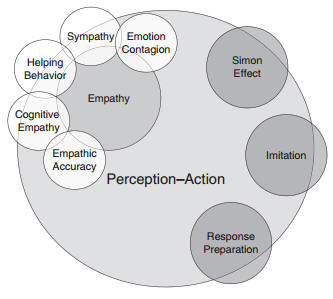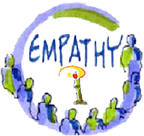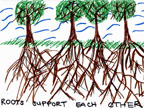|
|
Culture of Empathy
Builder:
Stephanie D. Preston
|
|
|
Dialogs on How to Build a Culture of Empathy
|
|
|
|
Dr. Stephanie Preston is the head of the ENL and an
Assistant Professor of Psychology at the University of Michigan. "Research
in my Ecological Neuroscience Laboratory uses an interdisciplinary approach
to study the interface between emotion and decision making. There are
currently two main lines of research:
1) How do people process the emotions of others and how does this affect
the type and amount of help they offer?
2) How do people make decisions about allocating resources like food,
money, and material goods?" |
 |
|
Links
|
'In Your
Right Mind' Explores How Empathy Can Impact Decision Making in a New
Broadcast on 790 AM KABC
"How important is empathy? Experts explain the neural correlates of
empathy, why it’s necessary in everyday life and how emotional
intelligence differs from Intelligence Quotient (IQ)."
The Many Faces of Empathy: Parsing Empathic Phenomena Through a
Proximate, Dynamic-Systems
View of Representing the Other in the Self. Stephanie D. Preston
and Alicia J. Hofelich
"A surfeit of research confirms that people activate personal,
affective, and conceptual representations when perceiving the states of
others. However, researchers continue to debate the role of self–other
overlap in empathy due to a failure to dissociate neural overlap,
subjective resonance, and personal distress. A perception–action view
posits that neural-level overlap is necessary during early processing
for all social understanding, but need not be conscious or aversive.
This neural overlap can subsequently produce a variety of states
depending on the context and degree of common experience and
emotionality. We outline a framework for understanding the
interrelationship between neural and subjective overlap, andamong
empathic states, through a dynamic-systems view of how information is
processed in the brain and body."
|
 |
|
"Figure 1. The perception–action
model of empathy proposes that empathy and related phenomena are
one category of processes that rely on perception–action
mechanisms and exhibit self–other overlap at the neural level.
Motor actions, including automatic imitation, also rely on
this system (see Preston & de Waal, 2002b)." |
Empathy: Its
ultimate and proximate bases
"Preston, Stephanie D. and de Waal, Frans B. M. (2000) Empathy: Its
ultimate and proximate bases.
The empathy literature is characterized by debate regarding the nature of the
phenomenon. We propose a unified theory of empathy, divided into ultimate and
proximate levels, grounded in the emotional link between individuals. On an
ultimate level, emotional linkage supports group alarm, vicariousness of
emotions, mother-infant responsiveness, and the modeling of competitors and
predators; these exist across species and greatly effect reproductive success.
Proximately, emotional linkage arises from a direct mapping of another's
behavioral state onto a subject's behavioral representations, which activate
responses in the subject. This ultimate and proximate account parsimoniously
explains different phylogenetic and ontogenetic levels of empathy."
| Term |
Definition |
Self-other distinction? |
State matching? |
Implications for helping? |
Synonyms |
| Emotional contagion |
Similar emotion is aroused in the subject as a
direct result of perceiving the emotion of the object. |
Lacking |
Yes |
None |
Personal distress,
Vicarious emotion, emotional transfer |
| Sympathy |
Subject feels "sorry for" the object as a result of
perceiving the distress of the object. |
Intact |
No |
Depends on the costs and benefits of the situation. |
|
| Empathy |
Subject has a similar emotional state to an object
as a result of the accurate perception of the object's situation or
predicament. |
Intact |
Yes |
Increasing with familiarity/similarity of object and
salience of display. |
|
| Cognitive empathy |
Subject has represented the state of the object as a
result of the accurate perception of the object's situation or
predicament, without necessary state matching beyond the level of
representation. |
Intact |
Partial, because it can be arrived at in a "top-down"
fashion, involving emotional circuits to a lesser extent. |
Likely, because it is more likely to be invoked for
familiar/similar objects. |
True empathy,
Perspective-taking |
| Prosocial behaviors |
Actions taken to reduce the distress of an object. |
Depends |
Not necessarily |
Inherent |
Helping, succorance |
TABLE 1: Usage
of terminology by most current researchers divided into main variables
of classification.

Figure 1: In
order to unify the various perspectives, empathy needs to be
construed broadly to include all processes that rely on the emotional
linkage between individuals.
|








